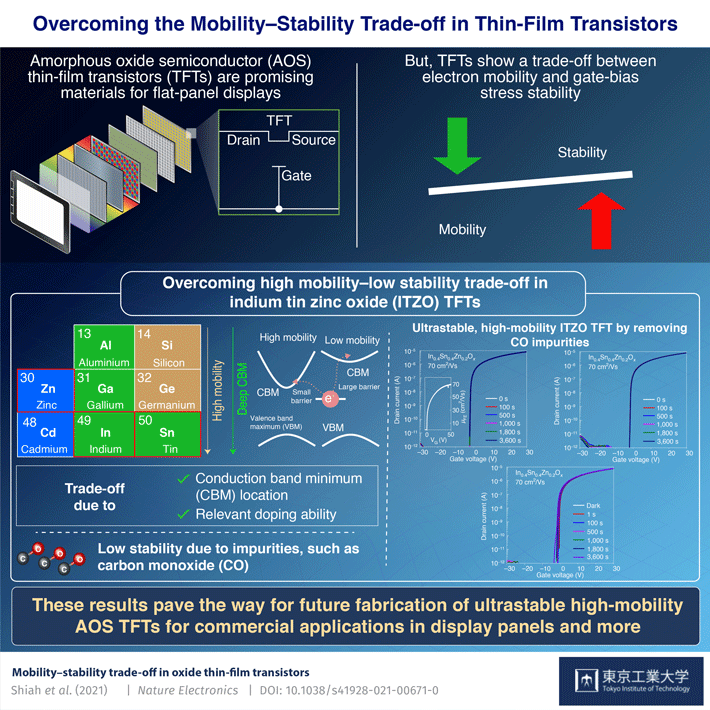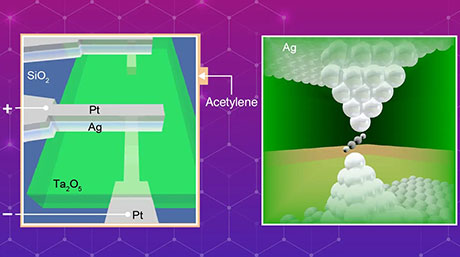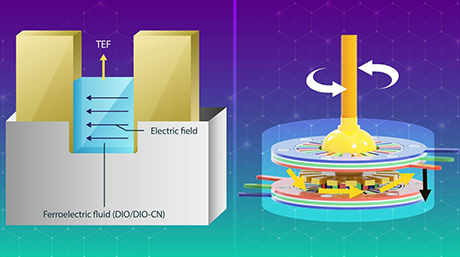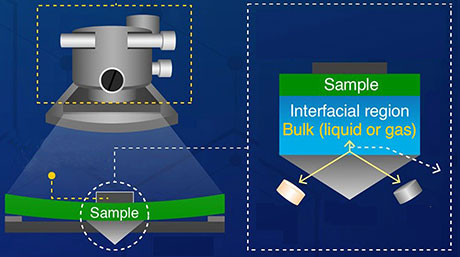Materials Science and Engineering News
Fabricating Stable, High-mobility Transistors for Next-generation Display Technologies
The trade-off between carrier mobility and stability in amorphous oxide semiconductor-based thin film transistors (TFTs) has been finally overcome by researchers from Tokyo Institute of Technology (Tokyo Tech) in an ingeniously fabricated indium tin zinc oxide TFT. This could pave the way for the design of display technologies that are cheaper than current silicon-based technologies.

Amorphous oxide semiconductors (AOS) are a promising option for the next generation of display technologies due to their low costs and high electron (charge carrier) mobility. The high mobility, in particular, is essential for high-speed images. But AOSs also have a distinct drawback that is hampering their commercialization — the mobility–stability tradeoff.
One of the core tests of stability in TFTs is the "negative-bias temperature stress" (NBTS) stability test. Two AOS TFTs of interest are indium gallium zinc oxide (IGZO) and indium tin zinc oxide (ITZO). IGZO TFTs have high NBTS stability but poor mobility while ITZO TFTs have the opposite characteristics. The existence of this tradeoff is well-known, but thus far there has been no understanding of why it occurs.
In a recent study published in Nature Electronics![]() , a team of scientists from Japan have now reported a solution to this tradeoff. "In our study, we focused on NBTS stability which is conventionally explained using 'charge trapping.' This describes the loss of accumulated charge into the underlying substrate. However, we doubted if this could explain the differences we see in IGZO and ITZO TFTs, so instead we focused on the possibility of a change in carrier density or Fermi level shift in the AOS itself," explains Assistant Professor Junghwan Kim of Tokyo Tech, who headed the study.
, a team of scientists from Japan have now reported a solution to this tradeoff. "In our study, we focused on NBTS stability which is conventionally explained using 'charge trapping.' This describes the loss of accumulated charge into the underlying substrate. However, we doubted if this could explain the differences we see in IGZO and ITZO TFTs, so instead we focused on the possibility of a change in carrier density or Fermi level shift in the AOS itself," explains Assistant Professor Junghwan Kim of Tokyo Tech, who headed the study.
To investigate the NBTS stability, the team used a "bottom-gate TFT with a bilayer active-channel structure" comprising an NBTS-stable AOS (IGZO) layer and an NBTS-unstable AOS (ITZO) layer. They then characterized the TFT and compared the results with device simulations performed using the charge-trapping and the Fermi-level shift models.
They found that the experimental data agreed with the Fermi-level shift model. "Once we had this information, the next question was, 'What is the major factor controlling mobility in AOSs?'" says Prof. Kim.
The fabrication of AOS TFTs introduces impurities, including carbon monoxide (CO), into the TFT, especially in the ITZO case. The team found that charge transfer was occurring between the AOSs and the unintended impurities. In this case the CO impurities were donating electrons into the active layer of the TFT, which caused the Fermi-level shift and NBTS instability. "The mechanism of this CO-based electron donation is dependent on the location of the conduction band minimum, which is why you see it in high-mobility TFTs such as ITZO but not in IGZO," elaborates Prof. Kim.
Armed with this knowledge, the researchers developed an ITZO TFT without CO impurities by treating the TFT at 400°C and found that it was NBTS stable. "Super-high vision technologies need TFTs with an electron mobility above 40 cm2 (Vs)-1. By eliminating the CO impurities, we were able to fabricate an ITZO TFT with a mobility as high as 70 cm2 (Vs)-1," comments an excited Prof. Kim.
However, CO impurities alone do not cause instability. "Any impurity that induces a charge transfer with AOSs can cause gate-bias instability. To achieve high-mobility oxide TFTs, we need contributions from the industrial side to clarify all possible origins for impurities," asserts Prof. Kim.
The results could pave the way for fabrication of other similar AOS TFTs for use in display technologies, as well as chip input/output devices, image sensors and power systems. Moreover, given their low cost, they might even replace more expensive silicon-based technologies.
- Reference
| Authors : | Yu-Shien Shiah1, Kihyung Sim1, Yuhao Shi1, Katsumi Abe2, Shigenori Ueda3, Masato Sasase1, Junghwan Kim1 * and Hideo Hosono1,3 * |
|---|---|
| Title of original paper : | Mobility–stability trade-off in oxide thin-film transistors |
| Journal : | Nature Electronics |
| DOI: | 10.1038/s41928-021-00671-0 |
| Affiliations : |
1 Materials Research Center for Element Strategy, Tokyo Institute of Technology, Japan 2 Silvaco, Japan 3 WPI-MANA, National Institute for Materials Science, Japan |
* Corresponding authors' emails: JH.KIM@mces.titech.ac.jp; hosono@mces.titech.ac.jp
- Shedding Light on the Development of Efficient Blue-Emitting Semiconductors | Tokyo Tech News
- New design strategy brightens up the future of perovskite-based light-emitting diodes | Tokyo Tech News
- A low-voltage high-luminance perovskite LED realized — press event held | Tokyo Tech News
- Lighting it up: A new non-toxic, cheap, and stable blue photoluminescent material | Tokyo Tech News
- Research group at Tokyo Tech develops new material for the electron injection layer and transport layer of organic EL displays | Tokyo Tech News
- Hideo Hosono - Manipulating electrons well to elicit the potential of materials, Part 1 | Research Stories | Research
- Hideo Hosono - Manipulating electrons well to elicit the potential of materials, Part 2 | Research Stories | Research
- 2020 Tokyo Tech Challenging Research Award | Tokyo Tech News
- Hideo Hosono wins Von Hippel Award from Materials Research Society | Tokyo Tech News
- Professor Hideo Hosono elected as Foreign Member of Royal Society | Tokyo Tech News
- Junghwan Kim | Researcher Finder - Tokyo Tech STAR Search
- Hideo Hosono | Researcher Finder - Tokyo Tech STAR Search
- Materials Research Center for Element Strategy (MCES)
- Materials Science and Engineering Graduate Major|Education|Department of Materials Science and Engineering, School of Materials and Chemical Technology
- Silvaco
- National Institute for Materials Science (NIMS)
- Latest Research News
Further Information
Assistant Professor Junghwan Kim
Materials Research Center for Element Strategy, Tokyo Institute of Technology
Email JH.KIM@mces.titech.ac.jp





